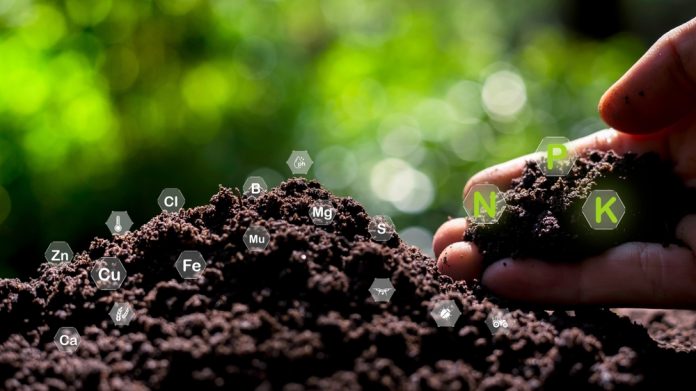University of Wisconsin–Madison engineers have developed low-cost printed sensors that allow for real-time, continuous monitoring of nitrate in soil types that are common in Wisconsin.
These printed sensors could enable farmers to make better-informed nutrient management decisions and reap economic benefits.
“Our sensors could give farmers a greater understanding of the nutrient profile of their soil and how much nitrate is available for the plants, helping them to make more precise decisions on how much fertiliser they really need,” explained Joseph Andrews, an assistant professor of mechanical engineering at UW–Madison who led the research.
“If they can buy less fertiliser, the cost savings could be quite significant at large-acreage farms.”
Monitoring nitrate pollution with the sensors
While nitrate is an essential nutrient for growing crops, excess nitrate can leach out of soil and into groundwater.
Soil pollution is dangerous for people who drink contaminated well water and is harmful to the environment.
The printed sensors could also be used as an agricultural research tool to monitor nitrate leaching and help guide best practices for mitigating its harmful effects.
Overcoming challenges with soil analysis
Current methods for monitoring nitrate in the soil are laborious, expensive and don’t provide real-time data.
For this project, the researchers used an inkjet printing process to fabricate potentiometric sensors, a type of thin-film electrochemical sensor.
Potentiometric sensors are commonly used to accurately measure nitrate in liquid solutions. However, these sensors aren’t typically suitable for use in soil environments, where coarse soil particles will scratch them and interfere with obtaining accurate measurements.
Andrews said: “The main challenge we were trying to solve is figuring out a way to enable these electrochemical sensors to work well in the harsh environment of soil and accurately sense nitrate ions.”
The team’s solution was to place a layer over the sensor made from polyvinylidene fluoride.
This has very tiny pores, about 400 nanometres in size, that allow nitrate ions to pass through while blocking soil particles. Also, it’s hydrophilic, meaning it attracts water and acts like a sponge to absorb it.
Commercialising the sensors
The team has tested its sensors in two different soil types relevant to Wisconsin—sandy soil, which is common in the north-central part of the state, and silt loam soil, which is common in southwestern Wisconsin—and found that the sensors produced accurate results.
The researchers are now incorporating their printed sensors into a multifunctional sensing system they call a ‘sensing sticker’. In this system, three different kinds of sensors are mounted on a flexible plastic surface with an adhesive on the back.
Several sensing stickers will be attached to a rod, positioning them at different heights, and burying the rod in the soil. This setup allows them to take measurements at multiple depths in the soil.
“By measuring the nitrate, moisture and temperature at different depths, we can now quantify the process of nitrate leaching and capture how nitrate is moving through the soil, which hasn’t been possible before,” Andrews concluded.





